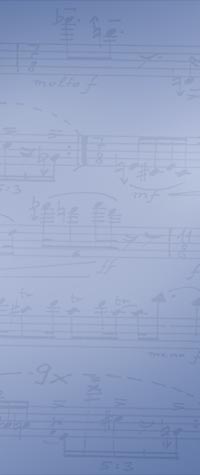
L' Orch pour l'orch (1990)
- Instrumentation: 2 picc, 5 cl, (2 cr ad lib.), 12 tbn (or 6 tbn and 6 amplified vc), 4 perc, 25 vl, 5 cb
- Movements: 1
- Duration: 20'
- Premiere: 20.10.1995, Donaueschinger Musiktage; SWF-Sinfonieorchester Baden-Baden, Olaf Henzold - cond.
- Publisher: none (available from composer)
Program Note:
(DE)
L'orch pour l'orch alias Aerials and the Sky ist eine Art Fortsetzung des inzwischen häufig gespielten musikalischen "Reiseberichts" Rain, a Window, Roofs, Chimneys, Pigeons and so... and Railway-Bridges, too, einer Komposition, die 1992 in Donaueschingen uraufgeführt wurde.
Während eines Rundgangs durch Prag ist der Hauptdarsteller faszieniert vom "Gesang" des Vorstandtrangierbahnhofs (Flageoletts der Violinen und Kleine Flöten), vom "Klopfen" der Steinmetze, die eine alte Kathedrale restaurieren (Schlagzeug) und von den auf Altstadtsächern miauenden Katzen (Klarinetten). Ein an Gähnen erinnerndes Motiv (Posaunen und Violoncelli) bezieht sich auf einen Traum, den der Protagonist im Gras unter dem Sternenhimmel von Kampa träumt. Bei Tagesanbruch wird er von einer seltsamen Musik geweckt - er sieht awei im Park sitzende Sinfonieorchester, die etwas irritierendes an sich haben: sie sind genau identisch und sitzen sich einander ins Gesicht schauend spiegelbildisch gegenüber. Ihre Besetzung ist ziemlich ungewöhnlich - eigene Instrumentengruppe fehlen, andere sind hypertrophiert. Der Kontrabaß ist zu einem lächerlichen Metallblättchen geschrumpft, das Schlagzeug von Handwerkern besetzt.
Ein Orchester spielt vermutlich für das andere. Die Musiker des Orchesters, das mit dem Rücken nach Smichov sitzen (laßt es uns Südwest nennen) hören mit starrem Blick zu, hier und da fällt ein Blatt auf Kahlköpfe, der Sommer ist bereits im Ausklingen, und gerade eben entleert sich ein Vogel in den Schalltrichter des inobligaten Waldhorns.
Martin Smolka (1995)
(EN)
Some years ago, when I gave a concert with my ensemble, friends used to come after the concert with questions such as: "How did you prodused teht strande sound"? These days, in equal situations, they come and ask: "How did you get money for the concert?"
In June I participated in performance of Satie's Vexation - a 22 hours lasting marathon. When early morning our last listener left the concert hall I met a fascinating experience: a clear l'art pour l'art situation. But immediatelly I was reaused by strong protest of a night-porter: "It costs so much money to run this concert hall and you play here just for yourselves! Who gave you monay for that? Do I pay taxes for this!?"
May I confess, in this monay-invoking times, what is L'Orch pour l'orch about? Can the spider's threads of my dreaming with which I tied up these notes together balance the terrible pile of hard German marks which costs an orchestra performance in Donauschingen? Wouldn't someone drub me if I admit that I was simply curious how 12 trombones would sound together and how a thicket of clarinets would mew? Who would consider important that being young and in love, I used to walk by a suburban shunting yard late in the night and the squeaking of the carriages sounded to me like an angels' chant? Who would be interested in that the unforgettable sound of tapping of stone-masons (when, years ago, the cathedral on Old Town Square had been repaired) symbolizes to me my hometown? That the cold-chisel taps on my heart?
The right performance of L'Orch pour l'orch would be a demonstration against money in arts. An orchestra would come together on Sunday very early morning in a park (no renting) and play for itself. No listeners, no fee, just for grass and trees. Or, and that would be even better, they play for another orchestra of equal instrumentation. The players of the other orchestra would be sitting face to them as a live mirror and listening with a deadpon look. Here and there a leaf comes down on some of the baldheads (summer is already declining) and just now a bird voided into a trumpet of the inobligatory French horn.
Martin Smolka







 Listen to an mp3 excerpt
Listen to an mp3 excerpt